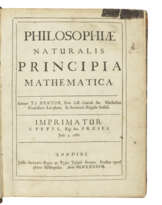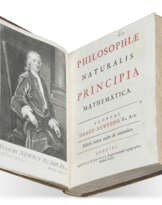ID 794559
Los 211 | NEWTON, Isaac, Sir (1642-1727)
Schätzwert
£ 400 000 – 600 000
Opticks: or, a Treatise of the Reflexions, Refractions, Inflexions and Colours of Light. Also Two Treatises of the Species and Magnitude of Curvilinear Figures. London: Sam. Smith and Benj. Walford, 1704.
First edition, first issue, of Newton’s revolutionary work on light and colour, including his work on the spectrum of sunlight, the degrees of refraction associated with different colours, the colour circle, the rainbow, ‘Newton's rings’, and his invention of the reflecting telescope.
Presentation copy to his close friend and disciple, the Swiss mathematician and natural philosopher Nicolas Fatio de Duiller.
The earliest known presentation copy and the earliest witness to the publication date of the Opticks, preceding that presented by Newton to the Royal Society.
‘Newton’s Opticks did for light what his Principia had done for gravitation, namely, placed it on a scientific basis’ (Babson, p.66). Newton had begun working on the nature of light and colour as early as the mid-1660s, and these studies informed his first publications in the journal of the Royal Society. As his ‘Advertisement’ to the published Opticks states, he had begun an extensive treatise on the subject in about 1675, but the project then lapsed until after publication of the Principia in 1687. The manuscript for Opticks was largely drafted in the period 1687-8 and 1691-2 – Newton’s young Scottish acolyte David Gregory saw an incomplete text when he visited Newton in Cambridge in May 1694 – but Newton again delayed completing the work, and the decision to publish it was taken only in 1702 or 1703. It was to be the only one of his major works to be seen through the press by Newton himself. The book was in the press by December 1703, and Newton presented the completed work to the Royal Society, of which he was the newly-elected president, on 16 February 1704, 5 days after presenting this copy to Fatio.
A talented mathematician and natural philosopher, Fatio had arrived in England in 1687 and first met Newton at a meeting of the Royal Society in June 1689. The two soon became close friends and collaborators, not only on natural philosophy (Fatio even hoped to be entrusted with the second edition of the Principia in the early 1690s) but also on alchemy and Biblical history. He had urged Newton throughout the 1690s to publish his work on the calculus, and was to some extent responsible for initiating the bitter priority dispute between Newton and Leibniz. Of only four surviving books from Fatio’s library, three are presentation copies from Newton, emphasising their close relationship. Furthermore, Fatio has annotated the present copy of the Opticks, first incorporating the printed errata (and noting so on the errata leaf: ‘Haec Errata correcta sunt’) but also adding further corrections, some of which accord with corrections made to the 1706 Latin edition of the Opticks and the 1711 edition of Newton’s mathematical tracts; precedence between Fatio’s manuscript corrections here and those made to the 1706 and 1711 printed works is impossible to establish. Six presentation copies of the Opticks are known; none is inscribed by Newton himself.
‘For over a century [the Opticks] remained a work of great authority, ‘supreme’ in Andrade's words, as a record of experiment and scientific deduction from experiment' (PMM). The book ends with two mathematical papers in Latin, published to establish Newton's prior claim over Leibniz in the discovery of the calculus. This copy is the first issue, with the title printed in red and black within a border and with the imprint, but without the author's name, and with the two treatises on calculus at the end of the work. Christie’s is grateful to Scott Mandelbrote for sharing his scholarship on Fatio and Newton. Babson 132; Dibner, Heralds 148; Grolier/Horblit 79b; Gray 174; Wallis 174; Norman 1588; PMM 172.
Quarto (240 x 187mm). Title printed in red and black, errata, 19 engraved folding plates (paper flaw to part 1 p.98 with some distortion to 2 lines of text and letters supplied in ink by the printer, a couple of other printing flaws, apparently features of the earliest copies to come off the press). Contemporary English panelled calf tooled in blind (rubbed, splits at joints with minor discreet repairs, some wear at extremities, missing spine label); modern silk-lined green morocco drop-back box by Shepherds. Provenance: Isaac Newton, presented in London on 11 February 1704 to: – Nicolas Fatio de Duillier (1664-1753; his autograph Latin inscription on the pastedown, ‘Ex Dono Autoris Clarissimi: Londini, Februarii undecimo, 1703⁄4’, the copy also annotated by him – James Johnstone (c.1730-1802, Worcestershire physician and antiquary; his acquisition noted on front free endpaper by his son: – John Johnstone (1768-1836; medical doctor in Worcester, FRS) – 20th-century booksellers’ marks.
Special Notice
No VAT on hammer price or buyer's premium.
| Künstler: | Isaac Newton (1643 - 1727) |
|---|---|
| Herkunftsort: | Nordeuropa, Europa, Vereinigtes Königreich |
| Kategorie des Auktionshauses: | Gedruckte Bücher |
| Künstler: | Isaac Newton (1643 - 1727) |
|---|---|
| Herkunftsort: | Nordeuropa, Europa, Vereinigtes Königreich |
| Kategorie des Auktionshauses: | Gedruckte Bücher |
| Adresse der Versteigerung |
CHRISTIE'S 8 King Street, St. James's SW1Y 6QT London Vereinigtes Königreich | |
|---|---|---|
| Vorschau |
| |
| Telefon | +44 (0)20 7839 9060 | |
| Aufgeld | see on Website | |
| Nutzungsbedingungen | Nutzungsbedingungen |
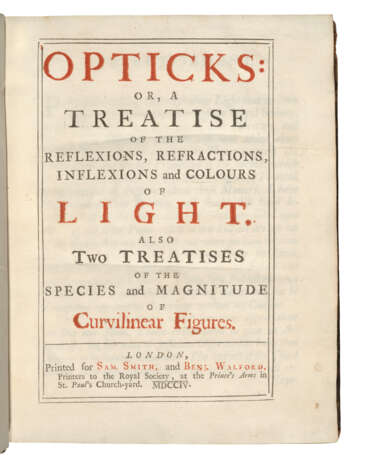
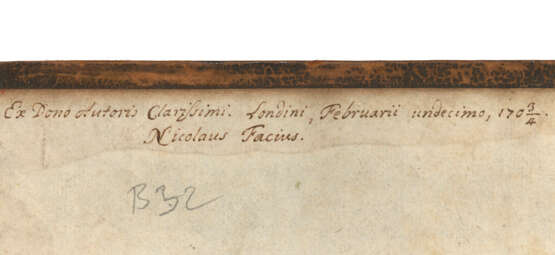
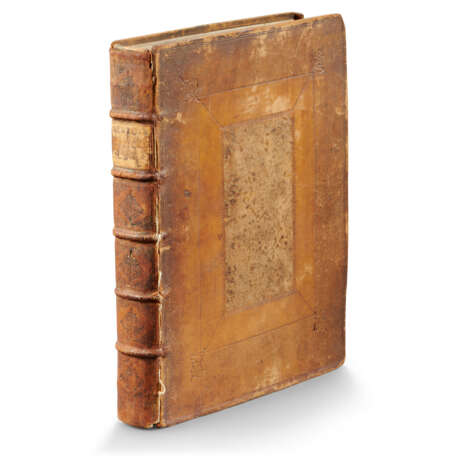
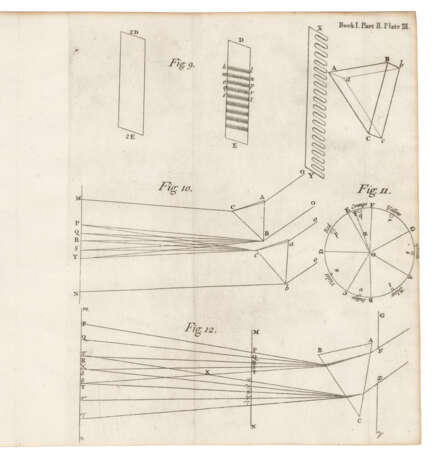
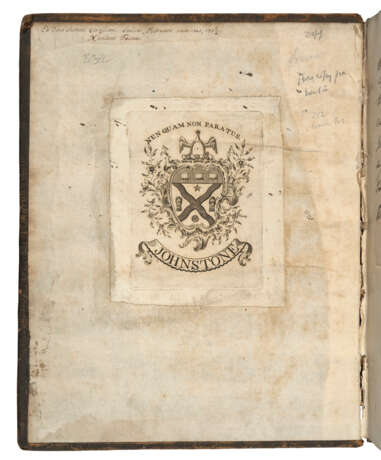
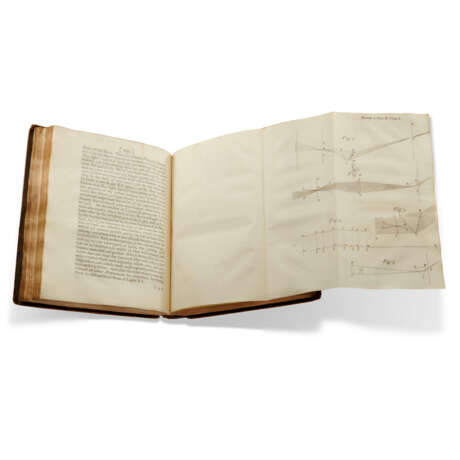
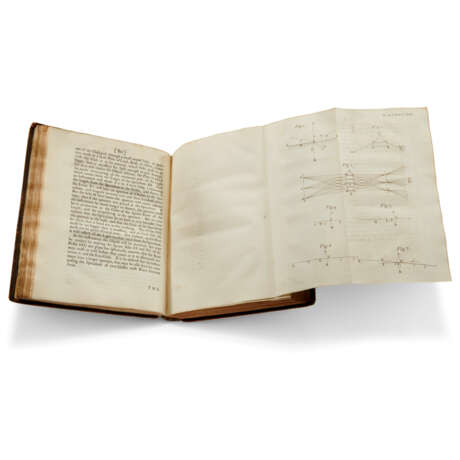

![[NEWTON, Isaac (1642-1727)]](/assets/image/picture_4036009/5c8e6/3e601c7a9444e346ef4136ceaf96156f1720562400jpg__fix_162_205.jpeg)



